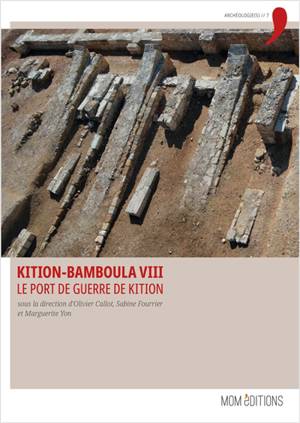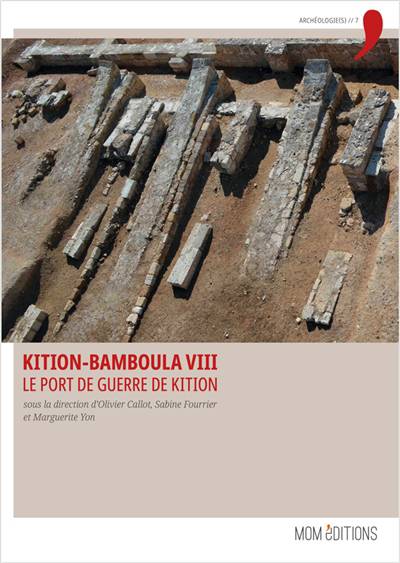
- Retrait gratuit dans votre magasin Club
- 7.000.000 titres dans notre catalogue
- Payer en toute sécurité
- Toujours un magasin près de chez vous
- Retrait gratuit dans votre magasin Club
- 7.000.0000 titres dans notre catalogue
- Payer en toute sécurité
- Toujours un magasin près de chez vous
Le port de guerre de Kition
Description
Kition-Bamboula VIII. Le port de guerre de Kition
Archéologie(s) // 7
De 1984 à 1999, la mission archéologique française de Kition, dirigée par Marguerite Yon, a conduit des fouilles extensives au nord du sanctuaire de Bamboula. Ces fouilles ont révélé les restes d'un hangar à trières d'époque classique, parmi les mieux conservés en Méditerranée, qui ouvrait au nord sur un bassin portuaire fermé. Cet ouvrage propose une étude détaillée et transversale de cette découverte exceptionnelle : le bâtiment est replacé dans son paléoenvironnement (à l'échelle locale et régionale), ses différentes phases d'utilisation sont datées, son architecture est soigneusement décrite et restituée pour les parties manquantes (élévation). On interprète enfin l'importance de ce port militaire dans l'histoire de Kition, de Chypre et de la Méditerranée orientale, à l'époque du royaume classique (IVe siècle av. J.-C.) et au début de l'époque hellénistique. Le volume est complété par une étude du mobilier céramique d'époque impériale découvert dans le comblement du bassin.
Les archives de la fouille sont consultables en accès libre sur le portail chypre.mom.fr.
From 1984 to 1999, the French archaeological mission of Kition, under the supervision of Marguerite Yon, conducted extensive excavations to the north of the Bamboula sanctuary. These excavations revealed the remains of shipsheds of the Classical period, among the best preserved in the Mediterranean, which opened to the north on a closed harbour basin. This book offers a detailed and cross-cutting study of this outstanding discovery : the building is contextualized in its paléoenvironment (both at the local and regional levels), the chronology of its different phases is established, its architecture is carefully described and restored for the missing parts (superstructure). Finally, we assess the importance of this military harbour for the history of Kition, Cyprus and the Eastern Mediterranean, at the time of the Classical kingdom (4th century BC) and at the beginning of the Hellenistic period. The volume is completed by a study of the ceramics from the Roman period discovered in the filling of the basin.
The archives of the excavation are available on the open access web-portal chypre.mom.fr.
Spécifications
Parties prenantes
- Editeur:
Contenu
- Nombre de pages :
- 336
- Langue:
- Français
- Collection :
- Tome:
- n° 8
Caractéristiques
- EAN:
- 9782356680761
- Date de parution :
- 14-04-22
- Format:
- Livre broché
- Dimensions :
- 210 mm x 300 mm
- Poids :
- 1250 g

Les avis
Nous publions uniquement les avis qui respectent les conditions requises. Consultez nos conditions pour les avis.





